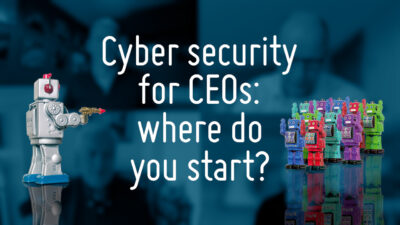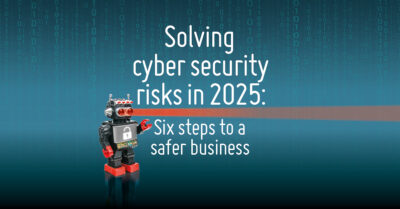How unsupported systems create business risks
SMEs and mid-market businesses often become deeply entrenched with their back-office and ERP systems, and major change may not be...
Read moreSMEs and mid-market businesses often become deeply entrenched with their back-office and ERP systems, and major change may not be...
Read moreIn recent months we’ve seen a rash of cyberattacks against big organisations – Marks & Spencer, Harrods, and Co-op. The...
Read moreCyber security is a leadership issue. There may have been a time when CEOs could leave cyber security to the...
Read moreThe government recently released its yearly Cyber Security Breaches Survey, and it’s illuminating. Whilst larger businesses are getting better at...
Read moreSome decades ago, a journalist asked UK Prime Minister Harold Macmillan what was the greatest challenge to his administration. His...
Read moreWhen the global movers and shakers gathered at the World Economic Forum earlier this year, they got a short, sharp,...
Read moreSuddenly the office is closed, and everyone’s working from home. The IT team is coping, but you’ve got a nagging...
Read moreHere’s a brief video of one of our founders, Steve Clarke, explaining how the IR35 change is affecting small operators,...
Read moreAny CEO knows that customer information is a very valuable asset. And how you manage customer relationships is vital. So...
Read morePlain English board-level briefings focused on technology strategies to deliver competitive advantage and business success.
You can unsubscribe at any time.
Call us on 0203 020 1864 with any questions.
Graeme Freeman
Co-Founder and Director
Plain English board-level briefings focused on technology strategies to deliver competitive advantage and business success.
You can unsubscribe at any time.
Call us on 0203 020 1864 with any questions.

Visit your regional site to get the most relevant content
Continue to United Kingdom & Rest of the World







